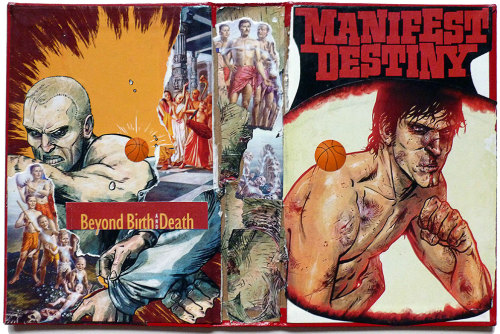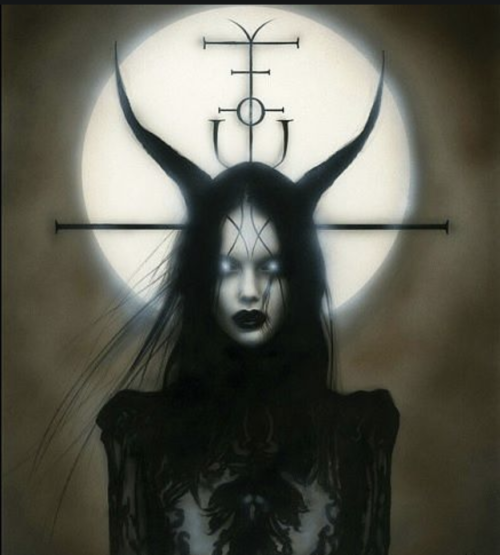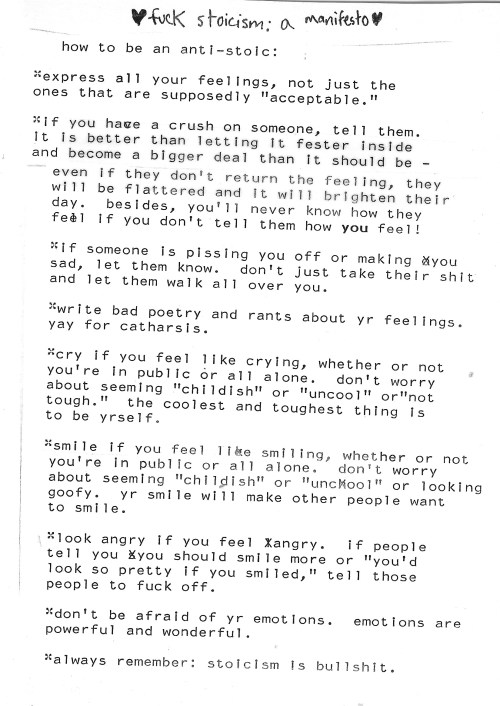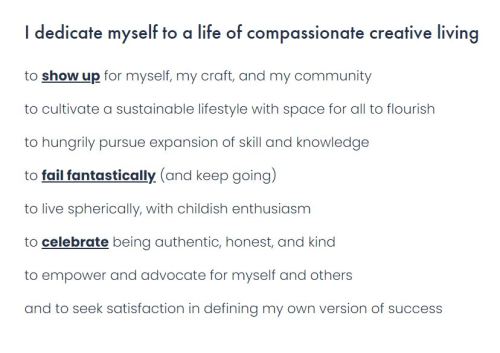#manifesto
Inizia oggi, il primo Lunedì di questo Agosto, la dedica di KinemaTrip ad uno degli apici avanguardistici in campo artistico e cinematografico, il surrealismo. In questo primo appuntamento, a cui seguiranno incontri a cadenza settimanale, scopriamo cos’è il surrealismo.
É Guillame Apollinaire a coniare, nel 1917, il termine “surrealista” utilizzandolo nel proprio dramma Le mammelle di Tiresia, in cui i protagonisti vedevano le proprie ombre staccarsi dal corpo e parlare a sé stesse e con cui Apollinaire ribadisce l’intenzione e il bisogno dell’arte di abbandonare gli schemi tradizionali per affidarsi ad una nuova, sovversiva etica.
“SURREALISMO, s. m. – Automatismo psichico puro con il quale ci si propone di esprimere, sia verbalmente, sia per iscritto, sia in qualsiasi altro modo, il funzionamento reale del pensiero. Dettato del pensiero, in assenza di qualsiasi controllo esercitato dalla ragione, al di fuori di ogni preoccupazione estetica o morale.”
É con questo brano che André Breton, fondatore del movimento surrealista, apre il primo Manifesto del Surrealismo nel 1924, evocando il termine coniato sette anni prima, donandogli una nuova funzione ma rispettando le intenzioni del suo ideatore. Nato come movimento letterario, e poi apertosi alle arti figurative, il surrealismo succede al fallimentare dadaismo, ritrovatosi dopo poco in uno stagnante vuoto intellettuale e produttivo. Ma il movimento fondato da Breton rivela velocemente di essere più funzionale della precedente avanguardia, proponendosi di scavare nelle profondità dell’animo umano, esplorandone l’inconscio e riproducendone l’iter irrazionale e incontrollato.
Il surrealismo porta a galla elementi della psicologia umana mai, fino ad ora, così palesemente analizzati dall’arte letteraria e figurativa. La possibilità di esaminare liberamente i propri limiti, mettendo nero su bianco ossessioni e paranoie affascina diversi esponenti dell’arte contemporanea, quali Joan Miró , Antonine Artaud, René Magritte, che dal Dicembre del 1924 contribuiranno alla crescita della rivista “La Révolution Surréaliste”, su cui vengono pubblicati diversi interventi, come la celebre inchiesta sulla sessualità nel n.11 della rivista (Marzo 1928) e “Il Cinquantenario dell’Isteria. 1878-1928”1 firmato da Breton e Louis Aragon.
Gli artisti aderenti al surrealismo esaminano i propri fantasmi, mettendo a disposizione del pubblico manifestazioni figurative di sessualità repressa o deviata, comportamenti mentali tipici dell’inconscio represso dalle norme sociali, religiose, culturali, avvertite dai surrealisti come strette e inadeguate alla libertà instintiva dell’animo umano. Il mondo agognato dai surrealisti, a partire da quello interiore e personale, è svincolato da tradizioni, caste ed eccessive sovrastrutture. La libertà intellettuale e morale dell’uomo è da ricercare, quindi, nei residui primitivi propri dell’essere umano.
Fino alle avanguardie l’arte ha cercato di parlare dell’umanità attraverso la bellezza, ora i surrealisti si impegnano ad esaltare ciò che ancora non era stato neanche considerato “cultura”. La spazzatura, sempre evitata dall’arte canonica, lo studio del brutto e del grezzo, l’ammissione di immagini vergognose e riprorevoli, acquisiscono dignità diventando nuovo mezzo di analisi. Così i surrealisti rivalutano il cinema popolare di Méliès e gli scritti del Marchese de Sade, lungamente disprezzati dalla cultura alta, divengono i testimoni di una nuova estetica: quella del primitivo e del grezzo, dello sporco e dell’osceno. E i surrealisti, affamati di sovversione e rivoluzione, sono i fondatori della nuova, eccezionale estetica che non bada alle tradizioni ma anzi mira a distruggerle.
Al prossimo incontro, con “l’automatismo psichico puro” ed i suoi metodi!
_____________________________________
1. «La crisi isterica prende forma a spese della stessa isteria, con la sua aura superba e i suoi quattro periodi (di cui il terzo ci rievoca alla stessa maniera i tableaux vivants più espressivi e più puri, la cui risoluzione è tanto semplice nella vita normale. L’isteria classica perde i suoi tratti nel 1906: “L’isteria è lo stato patologico che si manifesta attraverso dei disturbi che è possibile riprodurre per mezzo della suggestione, presso certi soggetti, con un’esattezza perfetta, e che sono suscettibili di sparire sotto l’influenza della sola persuasione (controsuggestione)” (Babinski).
Noi non vediamo, in questa definizione, che un momento del divenire dell’isteria. Il movimento dialettico che l’ha fatta nascere segue il suo corso. Dieci anni più tardi, sotto il deplorevole travestimento del pitiatismo, l’isteria torna a riprendersi i suoi diritti. Il medico resta stupefatto. Egli vuole negare ciò che non gli appartiene.
Proponiamo dunque, nel 1928, una nuova definizione di isteria: L’isteria è uno stato mentale più o meno irriducibile che si caratterizza per la sovversione dei rapporti che si stabiliscono tra il soggetto e il mondo morale di cui egli crede in pratica di appartenere, al di fuori di qualsiasi sistema delirante. Questo stato mentale è fondato sul bisogno di una seduzione reciproca, che spiega i miracoli prematuramente accettati come suggestione (o contro-suggestione) medica. L’isteria non è un fenomeno patologico e può, sotto ogni punto di vista, essere considerata come un mezzo supremo d’espressione» Breton, A, Aragon, L. (1928) da “Le cinquantenaire de l’hystérie. 1878-1928″, La Révolution Surrealiste, 15 marzo 1928
by Martine Syms
The undersigned, being alternately pissed off and bored, need a means of speculation and asserting a different set of values with which to re-imagine the future. In looking for a new framework for black diasporic artistic production, we are temporarily united in the following actions.
***The Mundane Afrofuturists recognize that:***
We did not originate in the cosmos.
The connection between Middle Passage and space travel is tenuous at best.
Out of five hundred thirty-four space travelers, fourteen have been black. An all-black crew is unlikely.
Magic interstellar travel and/or the wondrous communication grid can lead to an illusion of outer space and cyberspace as egalitarian.
This dream of utopia can encourage us to forget that outer space will not save us from injustice and that cyberspace was prefigured upon a “master/slave” relationship.
While we are often Othered, we are not aliens.
Though our ancestors were mutilated, we are not mutants.
Post-black is a misnomer.
Post-colonialism is too.
The most likely future is one in which we only have ourselves and this planet.
***The Mundane Afrofuturists rejoice in:***
Piling up unexamined and hackneyed tropes, and setting them alight.
Gazing upon their bonfire of the Stupidities, which includes, but is not exclusively limited to:
- Jive-talking aliens;
- Jive-talking mutants;
- Magical negroes;
- Enormous self-control in light of great suffering;
- Great suffering as our natural state of existence;
- Inexplicable skill in the martial arts;
- Reference to Wu Tang;
- Reference to Sun Ra;
- Reference to Parliament Funkadelic and/or George Clinton;
- Reference to Janelle Monáe;
- Obvious, heavy-handed allusions to double-consciousness;
- Desexualized protagonists;
- White slavery;
- Egyptian mythology and iconography;
- The inner city;
- Metallic colors;
- Sassiness;
- Platform shoes;
- Continue at will…
***We also recognize:***
The harmless fun that these and all the other Stupidities have brought to millions of people.
The harmless fun that burning the Stupidities will bring to millions of people.
The imaginative challenge that awaits any Mundane Afrofuturist author who accepts that this is it: Earth is all we have. What will we do with it?
The chastening but hopefully enlivening effect of imagining a world without fantasy bolt-holes: no portals to the Egyptian kingdoms, no deep dives to Drexciya, no flying Africans to whisk us off to the Promised Land.
The possibilities of a new focus on black humanity: our science, technology, culture, politics, religions, individuality, needs, dreams, hopes, and failings.
The surge of bedazzlement and wonder that awaits us as we contemplate our own cosmology of blackness and our possible futures.
The relief of recognizing our authority. We will root our narratives in a critique of normative, white validation. Since “fact” and “science” have been used throughout history to serve white supremacy, we will focus on an emotionally true, vernacular reality.
The understanding that our “twoness” is inherently contemporary, even futuristic. DuBois asks how it feels to be a problem. Ol’ Dirty Bastard says “If I got a problem, a problem’s got a problem ‘til it’s gone.”
An awakening sense of the awesome power of the black imagination: to protect, to create, to destroy, to propel ourselves towards what poet Elizabeth Alexander describes as “a metaphysical space beyond the black public everyday toward power and wild imagination.”
The opportunity to make sense of the nonsense that regularly—and sometimes violently—accents black life.
The electric feeling that Mundane Afrofuturism is the ultimate laboratory for worldbuilding outside of imperialist, capitalist, white patriarchy.
The sense that the rituals and inconsistencies of daily life are compelling, dynamic, and utterly strange.
Mundane Afrofuturism opens a number of themes and flavors to intertextuality, double entendre, politics, incongruity, polyphony, and collective first-person—techniques that we have used for years to make meaning.
***The Mundane Afrofuturists promise:***
- To produce a collection of Mundane Afrofuturist literature that follows these rules:
- No interstellar travel—travel is limited to within the solar system and is difficult, time consuming, and expensive.
- No inexplicable end to racism—dismantling white supremacy would be complex, violent, and have global impact.
- No aliens unless the connection is distant, difficult, tenuous, and expensive—and they have no interstellar travel either.
- No internment camps for blacks, aliens, or black aliens.
- No Martians, Venusians, etc.
- No forgetting about political, racial, social, economic, and geographic struggles.
- No alternative universes.
- No revisionist history.
- No magic or supernatural elements.
- No Toms, Coons, Mulattoes, or Bucks.
- No time travel or teleportation.
- No Mammies, Jezebels, or Sapphires.
- Not to let Mundane Afrofuturism cramp their style, as if it could.
- To burn this manifesto as soon as it gets boring.
— Martine Syms & whomever will join me in the future of black imagination.













How great is this cast. Cate Blanchett x 13.
Blues oltremare is a song about nostalgia.
.
È l'illustrazione selezionata per la mostra #whatafeeling delle carissime @le_vanvere . Ne sono molto felice, anche se per forza di cose la mostra non è stata più fatta.
Post link
öyle bir ruh halindeyim ki anlamı pek de bilinmeyen bir sürü kelimeden oluşan maddelerle bir manifesto hazırlayıp bu ruh halini bir akım olarak insanlara sunasım geliyor.
Mary Harron (CA, 1953)

I Shot Andy Warhol ( 1996) a Kinetic Look at 1960s New York. You only get one shot at fame…poster
Valerie Solanas entered Warhol’s sixth-floor office on June 3, 1968, shot with a .32 Beretta both Warhol and Mario Amaya, a London art gallerist, and left the building.
She thought he was was going to steal her manuscript, he ignored her calls…
Beginning in late 1965, she repeatedly tried to get Warhol to produce a play she had written called Up Your Ass…
S.C.U.M Manifesto, Olympia Press, 1971
Calling on “civic-minded, responsible, thrill-seeking females” to “overthrow the government, eliminate the money system, institute complete automation and eliminate the male sex.”
https://www.history.com/news/andy-warhol-shot-valerie-solanas-the-factory
Post link
“No genuine social revolution can be accomplished by the male, as the male on top wants the status quo, and all the male on the bottom wants is to be the male on top. The male ‘rebel’ is a farce; this is the male’s ‘society,’ made by him to satisfy his needs.”
SCUM Manifesto — Valerie Solanas
“In actual fact, the female function is to explore, discover, intent, solve problems, crack jokes, make music—all with love. In other words, create a magic world.”
SCUM Manifesto — Valerie Solanas
“What will liberate women, therefore, from male control is the total elimination of the money-work system, not the attainment of economic equality with men within it.”
SCUM Manifesto — Valerie Solanas
The manifesto! (posted by @supra930) #glockfanatics #glockperfection #staythecourse #manifesto #truth
Post link
Throw Away Your Books, Rally in the Streets (1971)
Directed by Shuji Terayama
Doomsy’s Rating: 98/100 (on my Great Films list!)
An undying punk manifesto: The faces spit on, burned onto celluloid forever. Terayama’s magnum opus, a scathing and incendiary battle cry for the disenfranchised and downtrodden. Never lost, never forgotten, these are the words spoken by those too obscure to hear. But here, and if only here, can they be heard with every desperate plea for change. The anger in this film could burn down the world, so full of resentment towards adults, towards authority, and towards oppression it will likely never be matched. The incomparable visual aesthetic is guerrilla, gutsy, and unapologetic, so steadfastly eager to capture the justifiable rage of the loners, the losers, the punks, the LGBT community, all those society has shit upon for far too long. Makes an excellent trilogy of the Japanese underground with Toshio Matsumoto’s Funeral Parade of Roses and Yoshihiko Matsui’s Noisy Requiem. Essential viewing for outsiders everywhere.
Post link
If I could fuck a mountain
Lord I would fuck a mountain
And I’d do it with a woman in the valley
(Palace Brothers: The Mountain Low)
Contemporary jewellery is dead. It crashed right before our eyes. See how it now hangs from the wall of the gallery, bent, broken, rigor mortis setting in. Protected by the stylized gravediggers of the art world, on display in is transparent coffin, the stench of rot swirling safely behind the glass.
The obituary, comme il faut, is subtly disguised as an invitation or included in a catalogue, sustaining the semblance of life a little while longer.
At the appointed time the crowd, elegant as always, swoops into the great hall to grace the official ceremony with its presence. Glasses are raised in memory of the deceased, astute analyses exchanged, the lack of recognition lamented. It seems as if everyone, excepting of course those who faithfully attend the High Mass of contemporary jewellery design, is visually impaired.
As the jewellery piece was being nailed to the wall it had let rip one last cry for help. Just when everything was going so well, fate had struck.
The visual arts just within reach, cruising round the next bend right in front of it instead of the usual full lap ahead. Almost bumper to bumper…
All it needed was the extra spurt in a game of catch up that had started somewhere in the heroic nineteen sixties. What hadn’t it done in the intervening years to fall into the good graces of its devotees? Its reputation as plaything of the rich finally cast off, its abstraction embraced, only to be swiftly replaced by the lyricism of the individual artist railing against the dictate of good taste. Museums had become an accepted podium and jewellery decided the time was ripe to celebrate its worth in all its godforsaken vanity once more.
In the pursuit of a place amongst the visual arts, jewellery design had reinvented itself aplenty and now finally the finish was in sight. Justice at last, mission accomplished: game over. But along the way it had become so fixated on acquiring status that it had lost its purpose and hence control over the wheel. The struggle for emancipation had become its ultimate goal. Then the crash came. And now here it hangs on the wall of the gallery like an X-ray of a cardiac arrest. It nestles in its glass case, oblivious to the fact that it already stopped breathing on the workbench of its maker.
Contemporary jewellery is an illusion. As artificial, as the stories told by the scribes, who, with their apologias try to invest a whiff of credibility.
By appealing to the uniqueness of every single creation process, they try to justify its existence; not just of one piece in particular or of a designer’s entire oeuvre but of the discipline as a whole. They tirelessly advocate a myth. In their hands, every piece of jewellery is interpreted as something without precedent. It’s a one-off, singular and brilliant - the work of a genius. And yet it simultaneously turns into a pars pro toto.
Their pens scour the brains of the true bearers of the Word: the artists who tend to intuit what a particular jewellery piece should tell if it is to fulfil its ambition of the new. Personal fear, euphoria and associations form the uncompromising basis from which jewellery will stir towards a new meaning. These are the stories recorded by the chroniclers of jewellery, like telegraphers of the holy above. Take them at their world and you will find yourself dangling from a very thin rope. It seems as if the world of jewellery design is created anew every day and with every invention the truth of that world becomes a little more definitive.
They avow a dogmatic faith in the incessant urge of contemporary jewellery design to be innovative, but forty years on in this alleged revolution their creationist stories can no longer conceal the epileptic fit convulsing the heart of this discipline. Contemporary jewellery pieces are like Rotary badges. As functional and just as steeped in the conventions they once tried to undermine. They have become the shorthand gesture of recognition for those who speak the same language. A rusty code that only has value for the intimate few.
Contemporary jewellery is autistic. It doesn’t read newspapers or books. Not out of principle but because of a lack of interest. It distrusts history as much as it wishes to sidestep reality. It cherishes and nurtures its own, often incomprehensibly cryptic language to avoid criticism, questions, comparison and even the smallest expression of doubt concerning its intentions.
Entrenched behind a parapet of silence it resists criticism and refuses to engage with the banalities of daily reality. Sometimes with such virtuosity that the parapet itself takes on meaning; when the sublime silence develops an autonomous power that lifts the result over and above the natural boundaries of a particular jewellery piece. But as often as not, there reigns a petulant silence, like that of a child trying to get its own way, pursing its lips and with folded arms striking a stubborn pose.
It’s a battle against parental authority that is lost up front because winning or losing in the end simply boils down to who has the longest breath.
In its ambition to remove itself from any form of critical context, contemporary jewellery has only managed to further isolate itself. Not only from the art world, but from its public as well. It complains of a lack of attention, yet wilfully retreats into the shadows of provincial life.
Here, in the safe isolation of the artist studio, passions that run high are hammered into every square millimetre of material and moulded into shape. That process, characteristic for the creation of every piece of jewellery for thousands of years was kept in balance by the astute awareness of its actual calling: as an accessory that ultimately expresses the aspirations and achievements of the wearer, not those of the designer. Yes, conventional, and yes, inevitably judged on craftsmanship but for that fact also recognisable and appreciated by the many.
The goldsmith followed the market and was - depending on his talents and skills - able to influence the tastes and fashions of his time; in exceptional cases even successfully introducing an indelible signature that bore the hand of its maker.
Modern jewellery lost this simple logic along the way. Every designer started to believe him or herself to be that exceptional case. Each of their stories took precedence over that of the end user, the wearer. The maker’s signature no longer had to be proven, was no longer a priori under discussion, now that it was simultaneously the source and ultimate goal of every creation. This transformed the typically extrovert ornament of yore into a piece of almost completely introverted sculpture. It chose the gallery over the shop, the collection over the street, the conversation between friends over social interaction.
Contemporary jewellery is superfluous. After all, what could it possibly contribute that other visual arts do not explore at least equally as well? Intimacy, unease, voyeurism, consolation, exuberance, silence, beauty…?
None of these belong exclusively to the domain of the jewellery designer. The moment the wearer was banished from the equation and the very social codes that had provided it with its most specific meaning were vilified contemporary jewellery gave up its raison d'etre. What followed was a turbulent but futile search for an emergency exit in a tunnel that just got darker and darker. Unless the self-inflicted isolation is radically abandoned, the discipline will have to settle for its position in the fringes of the fringes. Barely noticed and certainly unchallenged. Striving for a safe, because enemy-free existence that is thoroughly uninteresting since it is validated only by those few square inches necessary for its own conception. If it wants a chance of survival its maker will have to step out into more dangerous terrain. Return to his craft, if only to forget it. That means ditching forty years of dogma but getting in return centuries of conformism and defiance that will doubtlessly prove a far richer source.
Jewellery must be sentimental and never look for compromise.
Jewellery must be owned by the public if it wants to touch the public.
Jewellery must steal and seek to be stolen.
Jewellery must cherish its enemies in order to make friends.
Jewellery must forget the psychoanalysis of the studio.
Jewellery must go out into the street to eat and be eaten.
Jewellery must be shamelessly curious.
Jewellery must look where to attack and neglect its defences.
Jewellery must use traditional codes in order to break them.
Jewellery must neither forgive nor forget.
Jewellery must ignore all prescription.


“Celebration of the street: Manifesto for the new jewellery” co-authored by Ted Noten and Gerd Staal is a part of the book Ted Noten: CH2=C(CH3)C(=O)OCH3 enclosures and other TNs
Images used in this post are not property of CURRENT OBSESSION and belong to their rightful owners. If these images belong to you and you would like them removed, please contact us.
I’m bothered by the domestic terrorist mass shooting in Buffalo…
I listen to critics but if they only knew the life I’ve lived they would know their snarky comments on the internet barely reach the level of slightly amusing. I can’t talk about my past or it would reveal too much but I’ve seen a lot of death and suffering. Speaking of dark things, being a notorious dominatrix has put me in touch with a lot of the fringe of society. For example, I know a lot of satanists. It would interests me but I don’t believe in a personal God, consequently, it would be illogical for me to believe in a personal Satan. However, some of his followers are interesting, especially the women. Some of them are extremists. For example one of them has been posting on Christian Right webpages that true Christians should continue to have service because Christ would protect them. It’s clear to me that she wants them to die! That’s what I call hard a core satanist! ……………….. I also know a lot of women who might be accurately described as lesbian terrorists. The are disappointed in this virus. One told me last night that she wanted a virus that would leave men impotent and reduce their testosterone. She wants their testicles to still produce a tiny amount of semen but wants male masturbation to be impossible because of lower hormones. A virus that withers the penis but leaves the testicle intact? I guess anything is possible. If she had her way, she would harvest the sperm surgically and impregnate women with only female children. She admitted that some tiny population of men would have to be born to continue the species until better solutions can be created. Actually as unworkable and fanatic as it is, I think the world would be a better place. Imagine being one of those few men and under the control of women who think like this. ………………. Occasionally, in the past, I have invited the female satanists and the lesbian terrorists to small parties in my home. I’d supply a little wine and a bit of the green fairy and I would let the ideas flow. Be careful out there. These women sometimes look perfectly normal. You know, like me.
Post link
“We hear daily about the impacts of our activities on ‘the environment’ (like 'nature’, this is an expression which distances us from the reality of our situation). Daily we hear too, of the many 'solutions’ to these problems: solutions which usually involved the necessity of urgent political agreement and a judicious application of human technological genius. Things may be changing, runs the narrative, but there is nothing we cannot deal with here, folks. We perhaps need to move faster, more urgently. Certainly we need to accelerate the pace of research and development. We accept that we must become more 'sustainable’. But everything will be fine. There will still be growth, there will still be progress: these things will continue, because they have to continue, so they cannot do anything but continue. There is nothing to see here. Everything will be fine. We do not believe that everything will be fine.”
-from the manifesto of the Dark Mountain Collective, a UK-based group of artists and writers dedicated to “uncivilization”
Ella siempre sorprende.. Vino o cerveza artesanal, como @la_alcalaina en ningún lugar
_________
#manifesto #manifestochocolatestout #stout #birraartigianale #craftbeer #birra #beer #santacruzdetenerife #beberentenerife #beberensantacruz #comerensantacruz #color #madeincanada #toronto #triplechocolate #flyingmonkeys #biendelúpulonubialonso #teneriffa #chocolate #bier #cerveza #laalcalaina #la_alcalaina
Post link
“It’s kind of like an astral cowboy.”
In the original Spanish:
- No hay honor más grande que ser un Charolastra.
- Cada quién hace de su culo un papalote.
- Pop mata poesía.
- Un toque al día, la llave de la alegría.
- No te tirarás a la vieja de otro Charolastra.
- Puto el que le vaya al América.
- Que muera la moral! Que viva la chaqueta!
- Prohibido casarse con una virgen.
- Puto el que la vaya al América.
- La neta es chida pero inalcanzable.
- Pierde la calidad de Charolastra el culero que rompa cualquiera de los puntos anteriores.
And in approximate English translation:
- There is no greater honour than being a Charolastra.
- Everyone can do what he wants with his life.
- Pop kills poetry.
- To smoke marijuana once a day, is the key to happiness.
- You won’t sleep with another Charolastra’s girlfriend.
- You are a faggot if the América is your favourite soccer team.
- Fuck the moral! Masturbation rules!
- You cannot marry a virgin.
- You are a faggot if the América is your favourite soccer team.
- The truth is fantastic, but unattainable.
- Any fucker that breaks any of these points loses the qualities of a Charolastra.
Tune of Listenings - Buena Vista Social Club
RMRL: A Vision of Men by John Orbit
Once I started photographing men, I knew I wouldn’t want to stop. I knew this gathering body of work would have to be named something. Real Men Real Life (RMRL for short) was what I came up with, and I still think it’s perfect. The subhead I used was “Male Photography by John Orbit”, and that’s what’s changed. Now, it’s “Real Men Real Life: A Vision of Men by John Orbit”.
Why the change? Well, the word “photography” is part of the issue. Unlike using pencils, paints or sculpture to depict the male form, “photography” suggests that an image can be captured as-is, and without interpretation. But what I’m doing absolutely feels like interpretation. Sometimes this feels more to me like sculpture and archery than “photography”. In any case, I’m trying to create images that find and celebrate the essence of these men, and my perspective or vantage point cannot be separated from this process. I’ve reached a place of confidence that my unique and idiosyncratic perspective does indeed have value.
I have respect, love, and gratitude for the men shown here. And I’m so appreciative for all of you who tune in, and cheer me on. Real Men Real Life is my vision of men, and I’m absolutely going to see that vision through!
Peace!
John Orbit
Video about the exhibition Manifestoby Julian Rosefeldt at the Hamburger Bahnhof Museum für Gegenwart Berlin
2016
the latest version (1.7) of my creative living manifesto for my upcoming website relaunch
text in image reads:
I dedicate myself to a life of compassionate creative living
to show up for myself, my craft, and my community
to cultivate a sustainable lifestyle with space for all to flourish
to hungrily pursue expansion of skill and knowledge
to fail fantastically (and keep going)
to live spherically, with childish enthusiasm
to celebrate being authentic, honest, and kind
to empower and advocate for myself and others
and to seek satisfaction in defining my own version of success
Post link













